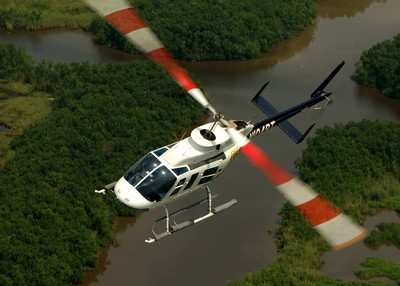Mon, Nov 21, 2022
AD 2022-22-08 Requires A Repetitive Inspection For Delamination...
The FAA is adopting a new airworthiness directive (AD) for Bell Textron Canada Limited (type certificate previously held by Bell Helicopter Textron Canada Limited) Model 206L, 206L-1, 206L-3, and 206L-4 helicopters with a certain part-numbered main rotor (M/R) blade installed under Supplemental Type Certificate (STC) SR02684LA.

This AD was prompted by delamination of M/R blades. This AD requires a repetitive inspection for delamination, and depending on the results, removing the M/R blade from service and reporting certain information. The FAA is issuing this AD to address the unsafe condition on these products. This AD is effective December 23, 2022.
Supplementary Information: The FAA issued a notice of proposed rulemaking (NPRM) to amend 14 CFR part 39 by adding an AD that would apply to Bell Textron Canada Limited Model 206L, 206L-1, 206L-3, and 206L-4 helicopters with a certain part-numbered M/R blade installed under STC SR02684LA. The NPRM published in the Federal Register on March 24, 2022 (87 FR 16652). The NPRM was prompted by testing by Van Horn Aviation, LLC (Van Horn), which revealed the potential for delamination in M/R blade part number (P/N) 20633000-101. Delaminations were then confirmed by inspection of in-service M/R blades. Testing by Van Horn confirmed that the 90° plies fail in spanwise tension (normal to the fiber direction) at the inboard end of the weight receptacle near M/R blade station 186.0. Delamination then propagates outboard from M/R blade station 186.0 at the interface between the 0° and 90° plies. According to Van Horn, fatigue testing has shown that the delamination initiates almost immediately and
progresses slowly in a stable, predictable manner. The delamination has been found to develop first on the lower surface and grow outboard from the inboard end of the weight receptacle and forward of the balance weight pocket. After approximately 4 to 6 inches growth of the delamination on the lower surface, a similar delamination becomes detectable on the M/R blade upper surface. Should the delaminations continue to grow to the point of static overload, the receptacle could depart the M/R blade. In the NPRM, the FAA proposed to require, at specified intervals, removing the affected M/R blade, drawing rectangular inspection areas “Zone 1” and “Zone 2” with a permanent marker, tap inspecting the inspection areas for delamination, marking and measuring the length of any delamination, and depending on the results, removing the M/R blade from service. The NPRM also proposed to require reporting certain information to Van Horn. The FAA is issuing this AD to address the unsafe condition
on these products.
More News
Touchdown Zone Lighting Two rows of transverse light bars located symmetrically about the runway centerline normally at 100 foot intervals. The basic system extends 3,000 feet alon>[...]
“Discovery and innovation are central to our mission at Virgin Galactic. We’re excited to build on our successful record of facilitating scientific experiments in subor>[...]
"We are reaching out to you today on behalf of the Popular Rotorcraft Association because we need your help. We are dangerously close to losing a critical resource that if lost, wi>[...]
UAS Traffic Management (UTM) The unmanned aircraft traffic management ecosystem that will allow multiple low altitude BVLOS operations and which is separate from, but complementary>[...]
Aero Linx: Society of Aviation and Flight Educators (SAFE) SAFE is a member-oriented organization of aviation educators fostering professionalism and excellence in aviation through>[...]
 ANN's Daily Aero-Term (05.02.24): Touchdown Zone Lighting
ANN's Daily Aero-Term (05.02.24): Touchdown Zone Lighting Aero-News: Quote of the Day (05.02.24)
Aero-News: Quote of the Day (05.02.24) Aero-News: Quote of the Day (05.03.24)
Aero-News: Quote of the Day (05.03.24) ANN's Daily Aero-Term (05.03.24): UAS Traffic Management (UTM)
ANN's Daily Aero-Term (05.03.24): UAS Traffic Management (UTM) ANN's Daily Aero-Linx (05.03.24)
ANN's Daily Aero-Linx (05.03.24)



